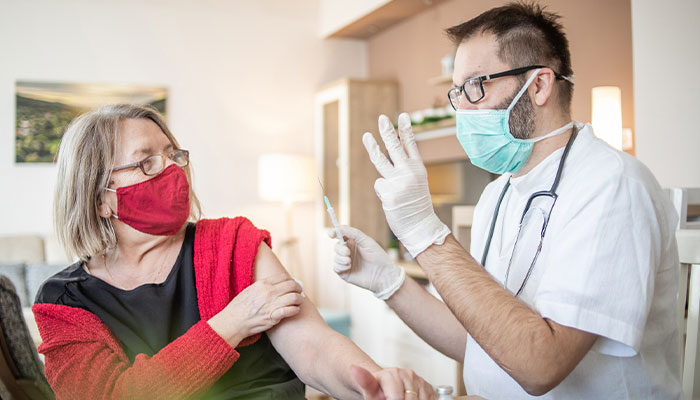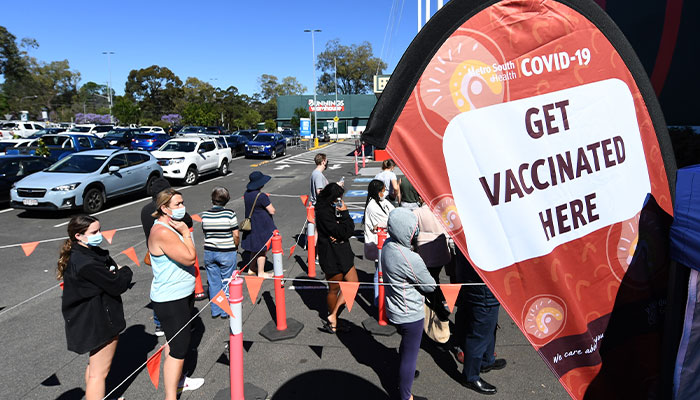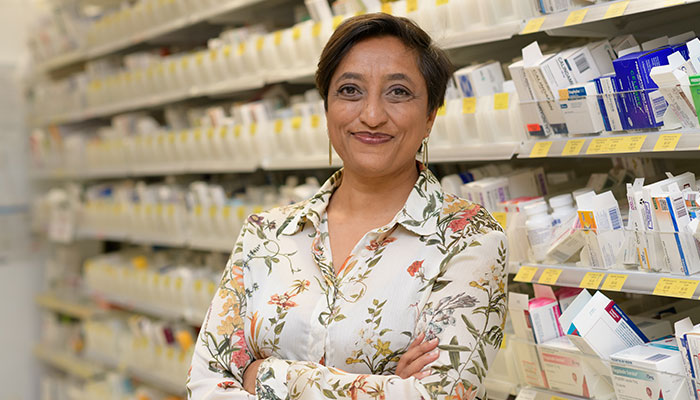Australia’s vaccination rollout began at the end of February, starting with frontline workers and people in aged care, before working through the rest of the adult population.

Third time lucky: There is some evidence that receiving a different vaccine for your booster shot provides greater protection.
The serious Delta outbreaks in Sydney and Melbourne added urgency to the operation, and now about 16 million Australians have received two doses of either a Pfizer, AstraZeneca or Moderna vaccine.
Last week, the Federal Government announced that everyone aged 18 and over should have a third, currently non-compulsory dose.
What does this mean?
For people who are immunocompromised, this represents a third primary dose that will bring their protection up to the same level as the rest of the population. For the rest of us, the third dose is a booster to be received six months after the second.
We don’t as yet have complete data to determine which mix of vaccines is best, though there is some evidence that receiving a different booster from the initial doses provides greater protection.
In vaccines that do benefit from boosters, each time we receive a dose, we have an antibody response and build up more memory cells, resulting in better, longer-lasting protection.
All vaccines work by introducing an antigen, or foreign particle, into the body to produce an immune response. When a person is first exposed to the antigen, whether through vaccination or by contracting the illness, the immune system responds with varying levels of intensity.
As this initial response fades, it leaves behind ‘memory cells’ which help in the production of antibodies so that if we come into contact with the antigen again, our bodies recognise it and know immediately how to fight off the intruder. How long that memory of the antigen lasts depends on the strength of the first response and the number of memory cells that are left behind.
Why do we need the booster?
Over time, it’s natural for antibodies and memory cells to decline. Some vaccines, like polio, diphtheria, and measles/mumps/rubella (MMR), do not usually require a booster. Others, like tetanus, require one every 10 years or so. In the case of the flu, our yearly vaccinations are not boosters: we are receiving a new vaccine each year tailored to the latest dominant strain.

All for one: Australians queue for a vaccination at a pop-up centre ... the value in any vaccine, and therefore its booster, lies not only in protecting ourselves, but in protecting those around us, says Professor Amin.
In vaccines that do benefit from boosters, each time we receive a dose, we have an antibody response and build up more memory cells, resulting in better, longer-lasting protection. The level of protection against COVID-19 varies according to the vaccine, the time since the second dose was administered and, in some cases, the interval between the first and second doses, as well as individual considerations such as age and any other health conditions the person may have.
Researchers have not yet been able to set a minimum threshold of immune response required for long-term protection from COVID-19, as this can vary for a number of reasons. As the COVID vaccines are relatively new, it's still too early yet to say whether we'll need further boosters or annual shots.
We know that SARS-CoV-2 – the virus that causes COVID-19 – is very susceptible to mutation, but to date, the available vaccines have been effective against severe illness associated with all the variants, including Delta.
Viruses have a lot of components, and the key to building a long-lasting vaccine is to build it around a component that elicits an immune response and doesn’t change a lot.
- Virtual reality to help train cardiologists
- The story of a tiny fossil that solved an evolutionary puzzle
In the case of SARS-CoV-2, the spike protein is the key component around which vaccines have been developed, and it appears, to date, not to be mutating rapidly.
The value in any vaccine, and therefore its booster, lies not only in protecting ourselves, but in protecting those around us who are unable to be vaccinated, either for medical reasons or because they are too young, as well as people who are immunocompromised and therefore at greater risk of contracting contagious diseases. COVID‑19 is no different.
While being vaccinated against SARS‑CoV‑2 doesn’t completely prevent us from becoming infected, it does dramatically reduce our chances of becoming seriously ill. The vaccines have been demonstrated to reduce transmissibility in the initial variants, and in conjunction with the other public health measures we have in place, this means we are less likely to pass the virus on to others.
As we learn more about the impact of the vaccines in real life, outside the clinical trial settings, we will learn more about their effectiveness against severe disease, transmission and different variants, which will affect decisoin-making about if, how and when further boosters may be required.

Professor Janaki Amin (pictured) is a researcher in the Macquarie University Department of Health Systems and Population



